Ukraine gains an edge in Kherson as counteroffensive nears
Reports suggest Ukrainian forces may have started securing a foothold among weak Russian defences in southern Ukraine.
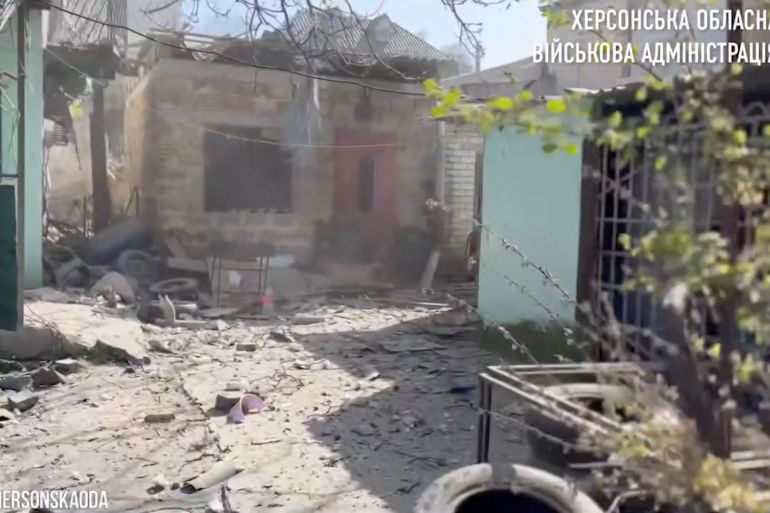
Ukrainian forces have advanced on a poorly-defended part of the riverine coast of Kherson, the southern region bisected by the Dnipro River, according to several reports during the 61st week of the war.
Ukraine took back a large swathe of the region, including the capital city also called Kherson, from invading Russian forces last year but the Russians entrenched themselves on the river’s left bank.
Keep reading
list of 4 itemsUS nuclear subs to dock in South Korea to deter Pyongyang: Biden
Ukraine’s counteroffensive to begin next week, says Wagner boss
Russia’s Navalny slams ‘absurd’ terrorism case from jail
Geolocated footage published by a Russian military reporter on April 22 showed that Ukrainian forces had established positions north of Oleshky, 7km (4.3 miles) southwest of Kherson city, said the Institute for the Study of War (ISW), a Washington-based think tank.
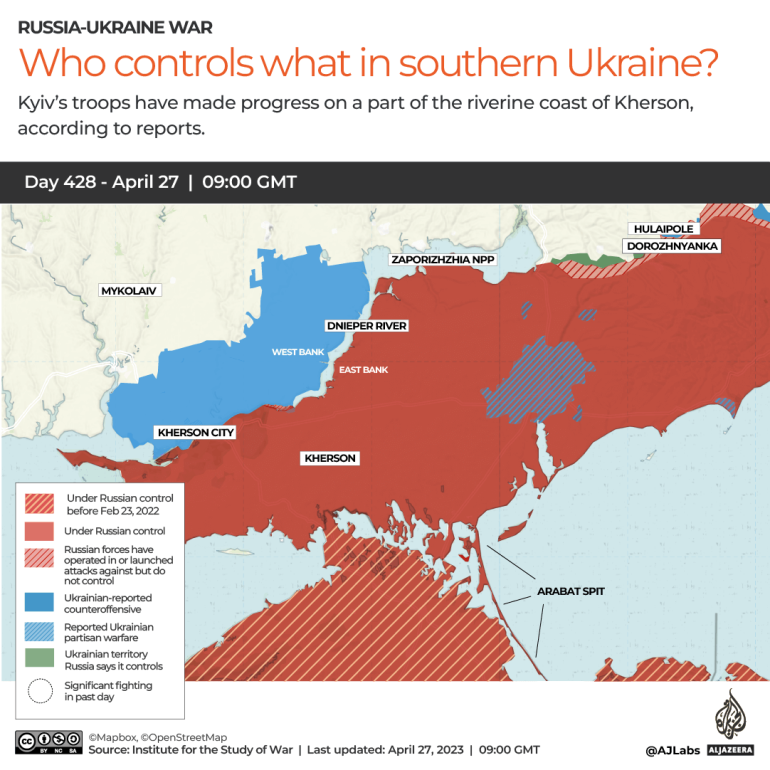
“The enemy is indeed carrying out attacks on the left bank using small boats supplied as part of United States military assistance,” wrote a Russian military reporter who posts as Rybar. “A large length of the coastline and the impossibility of physical control over the coastal areas due to regular shelling play in favour of the Armed Forces of Ukraine.”
Another Russian reporter wrote on April 20 that Ukrainian forces had been fortifying their positions “on our shore” near the destroyed Antonivskyi Bridge.
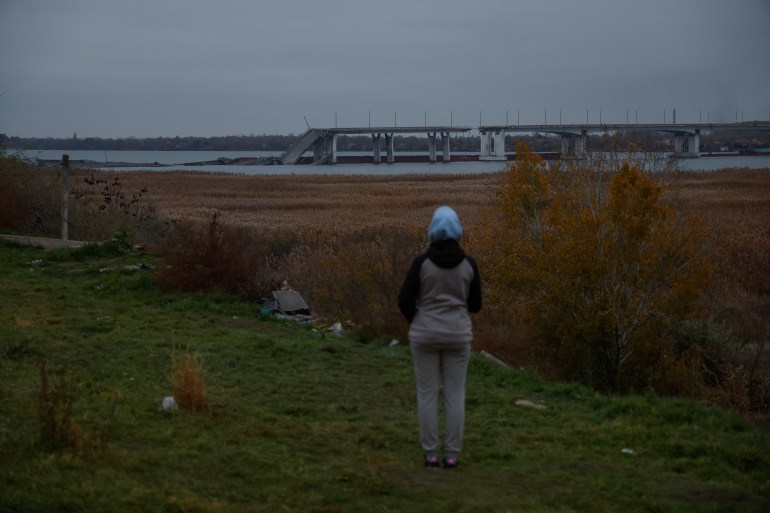
“Thanks to our stupidity, the enemies there have established a stable supply for themselves, are accumulating strength, evacuating the wounded, bringing provisions and ammunition,” the reporter wrote on Telegram.
Another reporter said Ukrainian forces controlled some of the islands in the nearby Dnipro delta.
“The Russian grouping in Kherson Oblast [region] is likely the most disorganised and undermanned in the entire theater,” wrote the ISW.
“It is highly likely that the remaining grouping on the east bank is mainly comprised of badly understrength remnants of mainly mobilized units,” it said.
According to leaked US military documents reported in the New York Times, 12 Ukrainian combat brigades amounting to 4,000 soldiers are expected to be ready to head to the front line by the end of April, with nine of them trained and supplied by the US and NATO.
Fear in Russia
There were also signs that the drone attacks on Russian soil, thought to have been launched by Ukraine although it has not acknowledged it, have had some psychological effect.
Some 3,000 people were evacuated from the Russian city of Belgorod after a bomb scare on April 22.
Two days earlier, a large bomb exploded on the city’s streets, opening a crater 20 metres (66 feet) across. Russia’s defence ministry said one of its aircraft had accidentally dropped a 500kg (1,100 pounds) bomb while on its way to Ukraine, raising questions about whether the optimal flight path had been chosen.
Last December, Russia accused the United States of directly helping Ukraine strike Dyagilevo and Engels, two airfields deep inside Russian territory, by providing GPS coordinates and satellite guidance to Ukrainian drones.
Ukraine has not officially taken responsibility for the attacks, but Russian vulnerability was again laid bare on April 24, when a Ukrainian drone was discovered in a forest 30km (19 miles) east of Moscow. Another had been found in February, 100km (62 miles) southeast of the capital.
Bakhmut
Russia’s defence ministry said its troops advanced into western Bakhmut on April 21. Russian military reporters claimed that forces of the Wagner mercenary group controlled 83 percent of the city.
The Washington Post reported that Russian forces were levelling entire buildings using converted gliding bombs to push back Ukrainian resistance, a tactic against which there was little defence.
“They are simply blowing up nine-story buildings,” a Ukrainian soldier told the newspaper. A powerful aerial bomb, he said, “was dropped on the four-story buildings next to ours – there was nothing left of it”.
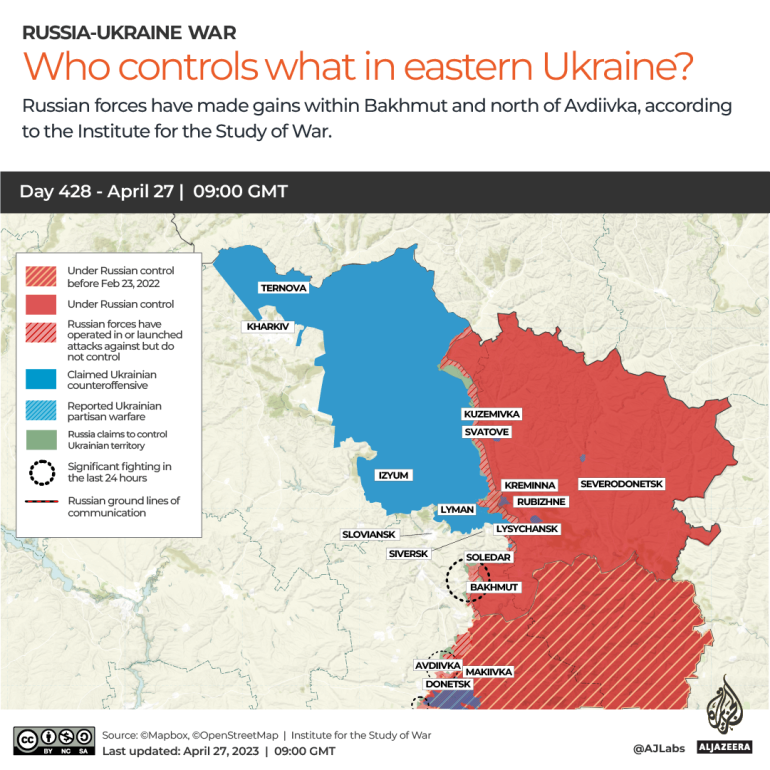
Russian forces have been advancing slowly through the city for months. The ISW reported that it believed Wagner “may well” be able to capture the city “at some point”.
Ukraine’s commander of ground forces, Oleksandr Syrskyi, said Ukrainian units were not just defending but also counterattacking Russian forces in the city.
“This gives us the opportunity for several months to contain the enemy’s offensive and not increase the front in this direction, to destroy his best units and buy time,” he said.
“The Ukrainian military continues to perform very well… Russia is expending significant manpower for very little gain,” said Mark Milley, the chair of the US Joint Chiefs of Staff.
“Russia continues to pay severely for its war of choice,” he said, lending support to Ukraine’s controversial strategy of standing its ground in what has become a battle of attrition in Bakhmut.
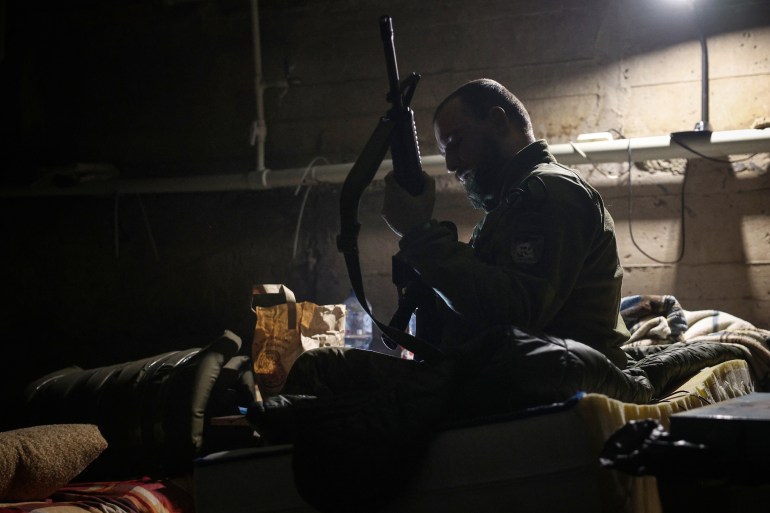
Counteroffensive
Ukraine, meanwhile, has secured new promises of weapons for its counteroffensive at the 11th meeting of the Contact Group of allies in Ramstein, Germany.
The US has announced a $325m drawdown of weapons, including HIMARS rockets, 155mm and 105mm artillery, and air defence munitions.
The Czech Republic said it would modernise 90 T-72 tanks for Ukraine, in addition to the 38 it has already sent. The timeframe was not announced. Denmark and the Netherlands promised 14 Leopard 2 tanks, bringing the total number of Western tanks allies have promised Ukraine since January to 266. Public announcements suggest 71 have arrived on Ukrainian soil.
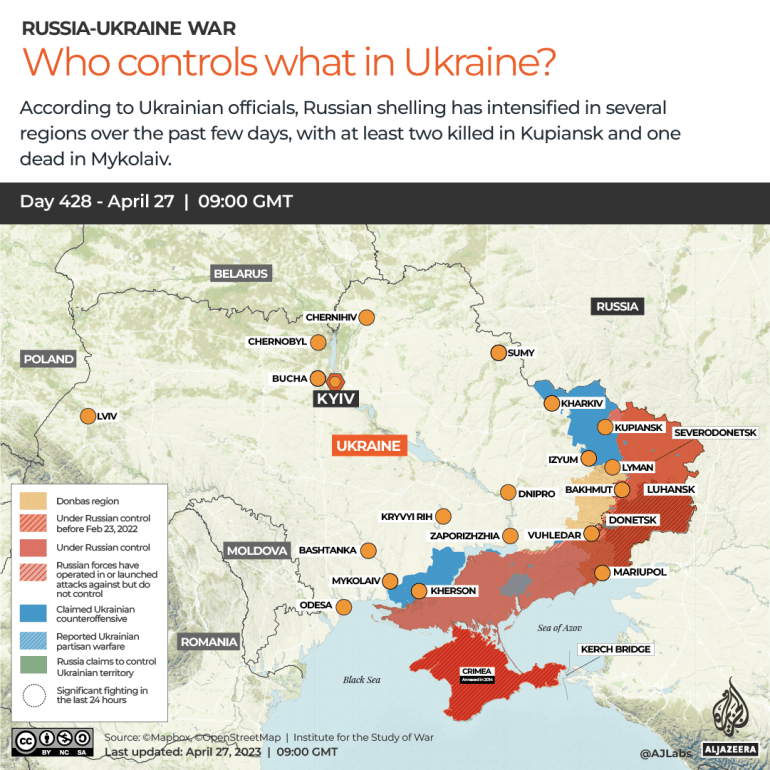
US Defence Secretary Lloyd Austin quoted much larger numbers on April 21.
“In just a few short months, the Contact Group has delivered more than 230 tanks, more than 1,550 armoured vehicles and other equipment and munitions to support more than nine new armoured brigades,” he said.
It was not clear if he was including Soviet stockpiles donated by former Warsaw Pact countries in addition to the Western tanks.
Austin said M1 Abrams training tanks would arrive in Germany “in the next few weeks” so Ukrainian crews could begin training on them. But the 31 battle tanks the US has promised will not be in Ukraine before the final quarter of the year, the Pentagon has said.
During our today’s call, @LarsLoekke confirmed that Denmark and the Netherlands will donate 14 Leopard 2 tanks. We are deeply grateful for this contribution. We also discussed expediting the delivery of 100 Leopard 1s that had already been pledged to boost Ukraine’s capabilities.
— Dmytro Kuleba (@DmytroKuleba) April 20, 2023
Milley said allies had trained and equipped nine mechanised brigades.
“Those brigades are trained, they’re manned and they’re equipped, and they are prepared for combat operations. So, whenever and wherever Ukraine chooses to use them, we will continue that support and I am very confident in those units’ ability to succeed,” Milley said.
But Ukrainian Foreign Minister Dmytro Kuleba suggested his country needed longer to fully prepare when he told the European Union Foreign Affairs Council that weapons deliveries needed to be speeded up. “Let’s tear down all the paper walls. Let’s remove all procedural obstacles,” he said.
Kuleba also called for more armoured vehicles, tanks, artillery, ammunition, air defence systems and Western jets.
EU high commissioner Josep Borrell said the bloc was days away from finalising a joint procurement programme that would speed up the delivery of artillery shells to Ukraine. The EU on March 20 agreed to send Ukraine a million artillery rounds over the next 12 months.
Legislation was passed in early April allowing EU members to be reimbursed from a 1 billion euros ($1.1bn) fund for drawdowns from their stockpiles.
But disagreements within the bloc delayed legislation on the procurement of new rounds. France insisted on keeping purchases within the EU, while Greece and Cyprus wanted to avoid outsourcing that would strengthen the Turkish armaments industry.
High expectations surround Ukraine’s counteroffensive.
Ukrainian military intelligence chief Kyryl Budanov said it was possible to reach Ukraine’s 1991 borders this year, meaning it could retake the industrial Donbas region as well as Crimea, the peninsula Russia seized and annexed in 2014.
“Crimea is part of the territory of Ukraine, the situation will not end without the return of Crimea,” he said.
Yevgeny Prigozhin, who funds Russia’s Wagner mercenary group, said the counteroffensive would provide “serious opposition”.
Ukraine’s stout resistance and counter-attacks have reinvigorated the NATO alliance. During a surprise visit to Kyiv on April 23, Secretary-General Jens Stoltenberg announced that Ukraine would become a NATO member.
“Ukraine rightfully belongs in NATO. And we will help. With our support, we will make it possible,” he said, adding, “NATO has decided that Ukraine will become a member of the alliance.”